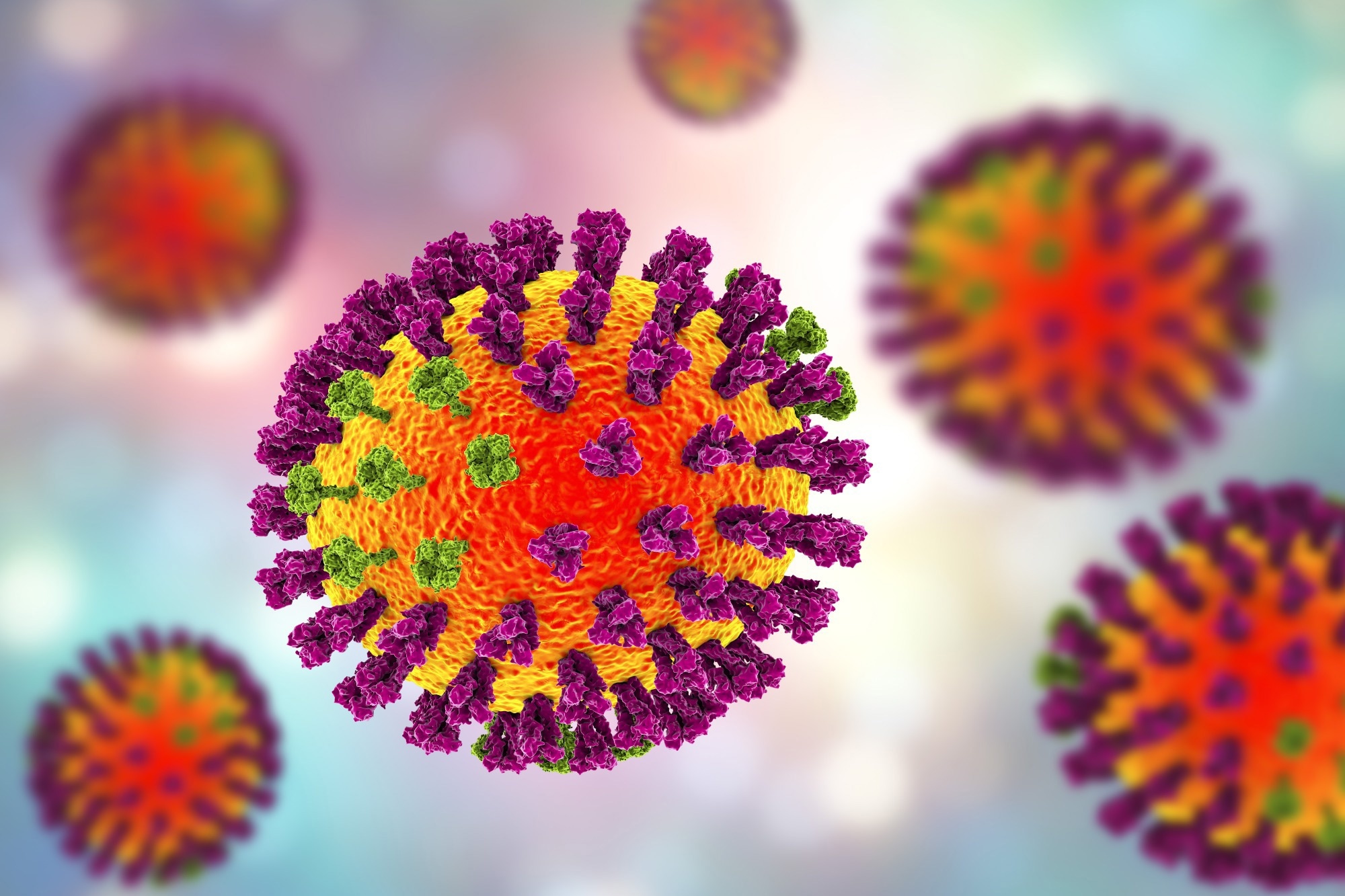In a recent article published in Proceedings of the National Academy of Sciences, researchers evaluate the potency of antiviral lectins against severe acute respiratory syndrome coronavirus 2 (SARS-CoV-2) variants of concern (VOCs) and SARS-CoV, thus illustrating its potential as a pan-coronavirus (CoV) inhibitor.
 Study: Targeting spike glycans to inhibit SARS-CoV2 viral entry. Image Credit: Kateryna Kon / Shutterstock.com
Study: Targeting spike glycans to inhibit SARS-CoV2 viral entry. Image Credit: Kateryna Kon / Shutterstock.com
Background
Given their ability to bind to carbohydrate moieties, lectins play crucial roles in several biological processes, including host-pathogen interactions. In fact, several studies have reported that antiviral lectins potently inhibit several viruses, including the human immunodeficiency virus (HIV), Ebola virus, and CoVs.
The SARS-CoV-2 spike (S) protein is heavily glycosylated, which protects the virus from the host immune system. S glycans can range from high mannose to complex glycans, thus leading to heterogeneity at all glycosylation sites.
Most glycans hide the protein surface they bind to; however, some possess additional structural roles. Biophysical and structural studies have confirmed a key role for the N165 and N234 glycans at 22 different asparagine (Asn) residues in positioning the binding of the SARS-CoV-2 receptor-binding domain (RBD) to the host angiotensin-converting enzyme 2 (ACE2) receptor.
Targeting glycans on the SARS-CoV-2 S protein could lead to the development of SARS-CoV-2 inhibitors, particularly against SARS-CoV-2 VOCs, which are more resistant to the inhibitory activity of monoclonal antibodies.
About the study
In the present study, researchers evaluate three antiviral lectins, including griffithsin (GRFT), Oscillatoria agardhii agglutinin (OAA), and Burkholderia oklahomensis agglutinin (BOA), for their potential to inhibit Vero E6 cells infected with the wild-type SARS-CoV-2 strain.
The effectiveness of BOA was also evaluated against the SARS-CoV-2, Alpha, Beta, Gamma, Delta, and Omicron BA.1 VOCs, as this lectin exhibited the highest anti-SARS-CoV-2 activity. The in vitro binding of OAA and BOA to the SARS-CoV-2 S glycoprotein was also evaluated using size exclusion chromatography (SEC).
Dynamic light scattering (DLS) was used to characterize the OAA- and BOA-induced aggregation of S. Pseudoviruses expressing SARS-COV-2 S protein variants N234A and N165A (control) were also developed to explore the mechanism of action of BOA-induced SARS-CoV-2 entry.
Study findings
GRFT exhibited no activity in all three virus-neutralization systems, whereas BOA and OAA exhibited potent inhibitory activity. In plaque assays, BOA blocked the wild-type SARS-CoV-2 variant with a half maximal effective concentration (EC50) value of nine nanomolar nM.
Thus, GRFT is structurally distinct from OAA and BOA and binds to different substructures of high mannose glycans. Structurally, BOA and OAA vary in the number of glycan-binding sites and beta-barrel domains; however, both exhibit the same glycan specificities, which allows for similar mechanisms of inhibition between these lectins.
Since BOA has four glycan binding sites, which is twice that of OAA, it was a more potent inhibitor of SARS-CoV-2. In fact, removing three of the four sugar-binding sites on BOA eliminated its antiviral activity.
In biophysical assays, the researchers mixed equimolar amounts of lectin and S proteins. In 5:1 or 10:1 molar excess of OAA or BOA, additional elution peaks for S protein were observed, thus suggesting that this viral protein formed large molecular mass complexes with OAA and BOA. The interactions between soluble aggregates formed by BOA and SARS-CoV-2 S conferred antiviral activity upon BOA.
In vitro, a monovalent BOA variant bound to the SARS-CoV-2 S protein but did not form soluble aggregates, which prevented any antiviral activity. Thus, the potent inhibitory activity of BOA against SARS-CoV-2 can be attributed to its multivalent interactions, which reduce to monovalent contacts to ultimately inhibit the SARS-CoV-2.
Psuedovirus experiments suggested that N234 or its glycan was essential for SARS-CoV-2 entry into host cells. Similarly, one previous study reported that the 234 glycan was essential for the functioning of the SARS-CoV-2 S function.
Conclusions
SARS-CoV-2 variants exhibit minimal changes with respect to glycosylation, which allowed for BOA to consistently and potently inhibit all tested viral variants. The similar potency of BOA against SARS-CoV, which initially emerged in 2003, demonstrates that the activity of this lectin is dependent on S protein glycans rather than its specific sequence. These findings support developing future therapeutic strategies using multivalent glycan binders as pan-CoV inhibitors.
Journal reference:
- Guseman, A. J., Rennick, L. J., Nambulli, S., et al. (2023). Targeting spike glycans to inhibit SARS-CoV2 viral entry. Proceedings of the National Academy of Sciences 120(38). doi:10.1073/pnas.2301518120